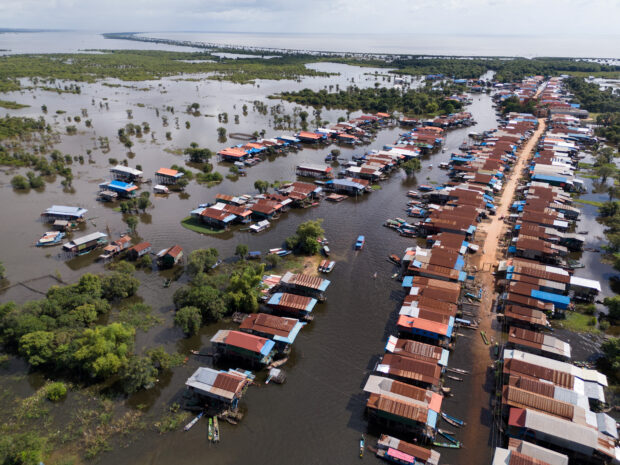
A general view of a floating fishing village near Kampong Phluk at Tonle Sap Lake, in Siem Reap, Cambodia Nov 15, 2023. REUTERS/Chantha Lach
KAMPONG PHLUK, Cambodia – Fisherman Siem Huat has seen fish stocks dwindle in recent years in Cambodia‘s majestic Tonle Sap Lake, and with them, his family’s sole source of income.
Experts say extreme weather brought by climate change, ecological disruption from dam-building, wetland conversions, and overfishing threaten food supplies and livelihoods for the millions who depend on Southeast Asia’s largest lake.
“Sometimes there is rainfall in the wrong months or it gets so hot I can’t go out to fish,” said the 45-year-old Siem Huat, as he navigated his boat through mangroves to pull in nets carrying disappointingly few fish.
The Mekong River typically swells in the rainy season as it converges with Cambodia‘s Tonle Sap River, sending an unusual reversed flow into the Tonle Sap Lake that fills up the latter and spawns bountiful fish stocks.
But in recent years, the reversal has been delayed or disrupted, so that those who rely on the lake to earn a living find themselves in a battle to survive.
“There are days when I struggle to earn enough to afford rice or cover the cost of gasoline to return home,” said Sar Mom, a 43-year-old fish vendor, whose typical daily income has plunged in a year to just $5 from $25.
Cambodian authorities are now scrambling to educate fishing communities on responsible farming practices, cutting water pollution and how to switch to fish farming or aquaculture.
Cambodia is one of a number of low-emitting, vulnerable countries that has called for developed countries to take more, and better concerted, action at the COP28 climate summit being held in Dubai.